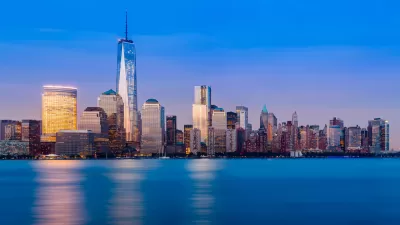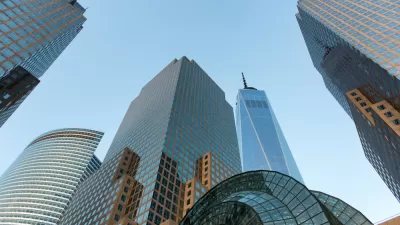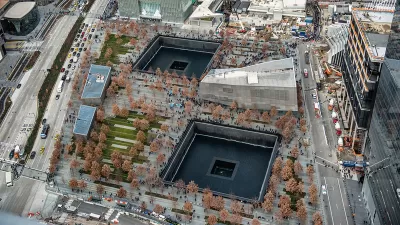David W. Dunlap recounts how the slurry wall built around the World Trade Center's foundations prevented the devastation to Lower Manhattan from becoming much worse, and "became a symbol of resilience in the months and years after the attack."
After it was built over nine months beginning in 1967 "using jury-rigged tools, on a site that brimmed with uncharted obstacles and unhappy surprises", engineer Arturo Lamberto Ressi di Cervia never thought he'd see the retaining wall he helped construct again in his life. But the events of Sept. 11, 2001 changed that.
"Because the slurry wall held, the 70-foot-deep foundation did not fill with groundwater [when the towers fell]. And because of that, the PATH tubes were not submerged. And because of that, the subway tunnels below the PATH tubes were not inundated," explains Dunlap. "How much worse could Sept. 11 have been? Imagine if Hurricane Sandy had followed the terrorist attack by a few hours."
"Thirty-five years later, in 2002, the architect Daniel Libeskind drew the world’s attention to the symbolic significance of the wall, when he proposed its preservation and exposure as part of the redevelopment of the trade center."
FULL STORY: Looking to a Wall That Limited the World Trade Center’s Devastation

Alabama: Trump Terminates Settlements for Black Communities Harmed By Raw Sewage
Trump deemed the landmark civil rights agreement “illegal DEI and environmental justice policy.”

Study: Maui’s Plan to Convert Vacation Rentals to Long-Term Housing Could Cause Nearly $1 Billion Economic Loss
The plan would reduce visitor accommodation by 25% resulting in 1,900 jobs lost.

Why Should We Subsidize Public Transportation?
Many public transit agencies face financial stress due to rising costs, declining fare revenue, and declining subsidies. Transit advocates must provide a strong business case for increasing public transit funding.

Paris Bike Boom Leads to Steep Drop in Air Pollution
The French city’s air quality has improved dramatically in the past 20 years, coinciding with a growth in cycling.

Why Housing Costs More to Build in California Than in Texas
Hard costs like labor and materials combined with ‘soft’ costs such as permitting make building in the San Francisco Bay Area almost three times as costly as in Texas cities.

San Diego County Sees a Rise in Urban Coyotes
San Diego County experiences a rise in urban coyotes, as sightings become prevalent throughout its urban neighbourhoods and surrounding areas.
Urban Design for Planners 1: Software Tools
This six-course series explores essential urban design concepts using open source software and equips planners with the tools they need to participate fully in the urban design process.
Planning for Universal Design
Learn the tools for implementing Universal Design in planning regulations.
Smith Gee Studio
Alamo Area Metropolitan Planning Organization
City of Santa Clarita
Institute for Housing and Urban Development Studies (IHS)
City of Grandview
Harvard GSD Executive Education
Toledo-Lucas County Plan Commissions
Salt Lake City
NYU Wagner Graduate School of Public Service





























